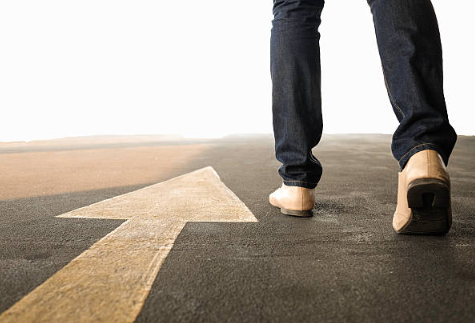How Can Visualization Change Your Body?
Discover how visualization can change your body and its benefits.

Selfpause Affirmation App
Download the app to get 1,000’s of affirmation meditations and everything you need to write, record and listen to your own.
If you have a strong desire to change your body, you can use the power of visualization to achieve this goal. There are several benefits to this technique. First, it helps you program your subconscious mind. By imagining yourself in a certain body shape, you will push your body to mimic that image. Using the proper diet and exercise, you can achieve this goal.
Effectiveness

A visualization is a powerful tool for changing your body. It activates our neural pathways and the brain responds to our mental images. It helps us achieve our goals. Mental imagery has numerous benefits, including enhanced motivation and self-esteem. It also improves motor performance and increases confidence. It has been used to treat physical ailments and help athletes improve performance.
Visualization techniques begin by relaxing your muscles and summoning a mental image. The time it takes to see results depends on the ailment you’re trying to treat, how vivid the imagery is, and your personal determination. For best results, do visualization exercises before sleep or in the morning.
Visualization has also been shown to improve your health and improve your diet. Visualizing yourself eating fruits is shown to make you more likely to eat more of them. Aside from physical health, the diet has a profound impact on our cognitive abilities, self-esteem, and relationships. Using visualization techniques can help you achieve a number of goals and make a big difference in your life.
In addition to physical health, visualization can help relieve stress and boost immune function. Studies have shown that guided imagery can increase white blood cell count, improve immune function, and increase bone health. Research has also shown that visualization can help reduce cortisol levels, a hormone that impairs healthy bone remodeling.
Visualization has been used for decades by elite athletes and everyday people. The technique works by harnessing the power of the brain and connecting the mind and body. While visualization can’t replace physical exercise, it can help athletes and everyday runners achieve their goals. By focusing on the physical sensations that occur while performing certain activities, it is possible to train your body to perform better in these activities.
Another way to increase the effectiveness of visualization for changing your body is by making your subconscious mind aware of negative thoughts and patterns. This will help you snap out of these negative thoughts. For example, you might think that you aren’t capable of exercising and can’t lose weight. Using visualization to improve your diet and health can be helpful in overcoming negative mindsets.
Benefits

Visualization is a powerful tool to help your body overcome illness. Studies have shown that the mind and body are closely connected, so by focusing on a particular image, the body can change its physical state. Generally, visualization is used alongside other therapies to achieve specific health goals. It has proven beneficial for many different conditions, including insomnia and fibromyalgia. It can also improve memory and concentration. Furthermore, it creates a peaceful, safe space in the mind.
Visualization can also help you overcome obstacles. In sports, for example, athletes often use visualization to prepare for an upcoming match by imagining the outcome. They can visualize how the game would go or deal with injuries. In addition, it can also help people cope with chronic pain. It can even help people lose weight and quit smoking. Athletes also use this technique to simulate the worst-case scenarios of an event before it occurs. Visualization helps them prepare for difficult situations and fight against negative thoughts.
While visualizing, deep breathing can help keep you calm and alert. You can also choose a specific emotion or color to help carry through the visualization process. The goal is to be able to visualize the feeling you want to experience. You can also use the technique to relieve stress, improve your mood, and find inspiration.
Visualization is an excellent tool to use to combat pain. It can help you heal faster from headaches and chronic pain. It can also increase your motivation. Visualization can also help you visualize your best self. It can even motivate endurance athletes. If you are a runner or endurance athlete, visualization can help you visualize what you want to achieve.
Visualization is an excellent mental exercise that can help you reach your goals. Practicing it regularly can help you get the results you desire. By focusing on your goal in your mind, you can trick your brain into believing that you already have it. This helps you overcome your fears and create positive behaviors.
Another great visualization technique is affirmation. You can imagine a particular scene or goal and engage all five senses in it. You can even make this practice a daily ritual. It only takes about 10 minutes a day, and it can be as simple as reading your goals out loud. You can make it even more powerful by closing your eyes when you’re done.
Ways to start

You might have heard about the power of visualization and how it can change your body. But before you get started, you must know that it is not an easy practice. It requires a lot of concentration and detail. However, it will become easier with time. To achieve the desired results, you need to make visualization a part of your daily routine.
Visualization involves engaging all your senses. To make it more realistic, you can build a world of sounds, smells, tastes, textures, and emotions. You can also add details to enhance the visualization. To make it more effective, you can include measurable goals.
Visualization exercises can help you connect with positive aspects of life. It is important to make sure that you practice visualization exercises daily for 5-10 minutes. You must repeat them in order for the brain to learn and adapt. Some people write down thirty or forty important life goals and visualize completing each one.
Another way to start visualization is to visualize your body as a bright ball of light. This will help you raise your vibration. The key is to stay present and open to your visualization. When you visualize your body, it is easier to focus on certain parts of the body. Visualization can help you change your DNA and change your body.
Using visualization can also help you cope with stress and anxiety. When you feel stressed or anxious, visualize your happy place. For instance, you could imagine yourself sailing on an ocean or a boat in an open pool. You can also imagine yourself in a mosh pit at a punk rock concert. Whatever it is, find a happy place where you feel calm and at peace.
When you begin visualization exercises, you need to prepare the environment for comfort. You need to clear distractions and make sure you have enough space. It is also important to remove any jewelry or clothing that can restrict your movements. Besides that, you need to get comfortable and lie down in a comfortable position.
Our Top FAQ's
Visualization is a mental exercise that involves creating a mental image or scenario in the mind. Research suggests that visualization can have an impact on our physical body through the power of the mind-body connection. For example, visualization has been found to activate the same areas of the brain as actual physical actions, and can lead to changes in brain waves, heart rate, and other physiological responses.
Yes, visualization techniques can potentially be used to improve physical health and well-being. For example, visualization can be used as a relaxation technique to reduce stress and anxiety, which can have a positive impact on physical health. Visualization can also be used to help with pain management, improve athletic performance, and achieve other physical goals.
Some examples of visualization practices that can influence the body include:
-
Guided imagery: This is a technique where a person imagines a peaceful, calming scene or experience in their mind, with the help of a trained guide or recorded audio. Guided imagery can be used to relax the body and mind, and has been found to be effective for reducing stress, anxiety, and pain.
-
Positive affirmations: This is a technique where a person repeats positive statements to themselves, either out loud or silently in their mind. Positive affirmations can help to change negative thought patterns and beliefs, and have been found to be effective for improving self-esteem and confidence.
-
Body scan meditation: This is a meditation practice where a person focuses on each part of their body, starting from the toes and working up to the head, and releasing any tension or stress they find along the way. Body scan meditation can be used to relax the body and mind, and has been found to be effective for reducing stress and improving sleep.
Visualization can be incorporated into a daily routine by setting aside a few minutes each day to practice visualization techniques. For example, you could try incorporating guided imagery or positive affirmations into your daily meditation or mindfulness practice. You could also try practicing visualization before bed as a relaxation technique to help with sleep.
Visualization may be able to help with physical challenges or injuries by providing a way to focus the mind and tap into the power of the mind-body connection. For example, visualization has been found to be effective for helping people with chronic pain to manage their pain and improve their quality of life. Visualization can also be used as a way to visualize and plan for successful physical rehabilitation after an injury. However, it is important to note that visualization should not be used as a substitute for medical treatment, and it is always important to consult with a healthcare provider for any physical challenges or injuries.
